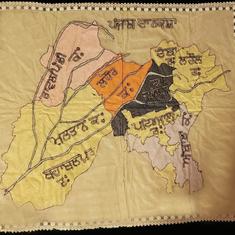Restrictive Legislation
The vague and overbroad phrasing of several sections of the Indian Penal Code and the Code of Criminal Procedure can be used to restrict freedom of expression, not only by governments, but by almost anyone who wishes to silence another. These include:
Section 95 of the CCP, which empowers state governments to seize and prohibit publications that “appear” to violate six discrete sections of the IPC. Although explicit grounds must be given for a forfeiture declaration, the burden of proof for underlying offences does not even rise to a balance of probabilities in court.
Section 124A of the IPC, which criminalises sedition. Throughout India’s history this overbroad provision has been used to silence public figures, including Mahatma Gandhi. More recently it has been used to justify the harassment of several thousand protesters at a nuclear site, a situation that prompted a formal inquiry from three UN Special Rapporteurs.
Section 153A of the IPC, which attempts to preserve “harmony” between a variety of enumerated groups by barring speech and several other acts. In January 2015, a BJP Minister was charged under s.153A for referring to a Minister in Uttar Pradesh as a “terrorist” – the complainant (a member of the public) felt that the statement hurt the feelings of the Muslim community. Similar charges were brought later in the month against a politician who criticised one of his opponents for doing nothing for his constituents “apart from procuring a new fleet of vehicles for the police and changing the colour of the vehicles in the convoy.” The opposing party found the statements “objectionable” and argued they “could affect peace and tranquility.”
Obscenity, Blasphemy, and the Control of Religious and Political Narratives
India’s obscenity laws side with the offended party and are easily leveraged by aggrieved groups or individuals.
In 2012, when the television regulator imposed a 10-day ban on Comedy Central for broadcasting a risqué skit, the Delhi High Court questioned neither the constitutionality of the Act, nor the penalty imposed. Obscenity laws have also been used to censor an actress whose opinions on pre-marital sex were published in a magazine. In the latter case one complainant only had second-hand knowledge of the alleged offence.
Blasphemy, which is criminalised by s.295A of the IPC, is defined as expression that is “intended to outrage religious feelings of any class by insulting its religion or religious beliefs.” In 2007, charges were successfully laid against the author of a book that dealt with the purported “political world invasion by Muslims.” It took three years before the High Court heard the application to remove the forfeiture – which was subsequently upheld.
The laws have also been used to police religious narratives. In February 2014 University of Chicago professor Wendy Doniger’s book The Hindus: An Alternative History was removed from bookstores after criticism from bloggers who believed it attacked Hinduism and sexualised Hindus, and a formal complaint by a member of a far-right conservative Hindu organisation. The book’s publisher noted that s.295A “will make it increasingly difficult for any Indian publisher to uphold international standards of free expression without deliberately placing itself outside the law.” Weeks later a different publisher put on hold the re-printing of another of Doniger’s books, On Hinduism, until it was reviewed by independent experts, in response to a charge by the same group.
Section 499, which criminalises defamation, can be used to secure a conviction without proof that actual harm has occurred – the intent or knowledge that harm would likely result is sufficient. Predictably, this provision has been used to silence political speech. In May 2014, the IPC’s public mischief provisions (s. 505) were used to arrest a Bangalore student who sent an allegedly offensive WhatsApp message about Prime Minister Modi.
Regulatory Constraints
India’s regulatory provisions may be used with more subtlety, but their impact on legitimate criticism of the government is no less significant. The penalties for regulatory offences are so steep, including imprisonment, that for all practical purposes they are just as threatening as criminal prosecutions.
The Cable Television Network (Regulation) Act, 1995 and the associated Cable Television Network Rules permit sanctions for a broadcaster who “offends against good taste or decency”, voices “criticism of friendly countries” or “aspersions against the integrity of the President and judiciary”. Since the rules are not enforced by an independent body, the High Court of Delhi has correctly described this situation as “anathema in a democratic setup inasmuch as it would put broadcast under the direct control of the state.”
The Unlawful Activities (Prevention) Act, 1967 has been used to prosecute a woman found with “Maoist leaflets,” even though, in a separate case, the High Court of Bombay held that the possession of propaganda from a banned organisation was not sufficient proof of membership. Local human rights groups report that the Act has been used with “fabricated evidence and false charges” to detain and silence peaceful activists.
The Foreign Contribution (Regulation) Act, 2010 has been used to lodge complaints against small NGOs who do not toe the party line. “I’m quite conservative,” said the Executive Director of one NGO interviewed for this report, “because I don’t want the organisation to be shut down. We can’t be seen as influencing public policy through public campaigns.” The NGO avoids, or downplays, discussion of religious issues and human rights reporting from certain disputed regions in the northeast of India. In April 2015, the Ministry of Home Affairs used the Act to suspend Greenpeace’s registration in India, observing that they were adversely affecting the national interest.
The Cinematograph Act, 1952 and its associated regulations empower the Central Board of Film Certification to censor parts of films or to ban them outright, not only for “decency or morality” but ostensibly to maintain public order and prevent crime. But even when films are approved by the Board, the threat of violence at screenings and the state’s inability, or refusal, to protect filmmakers, often combine to exert a chilling effect. As this report was being prepared, the Board was deliberating over the certification of two controversial films.
The Contempt of Court Act, 1971 punishes ‘criminal contempt’ including expression that scandalises or ‘tarnishes’ the image of the court. A former Supreme Court Justice has called the law a “great silencer,” which has been used to suppress public discussion of questionable judicial conduct. Excesses include contempt cases lodged against policemen “who dare to hold up judges’ cars while controlling the flow of traffic,” and a judge who threatened to fine a railway official in contempt for not doing as he asked.
The Information Technology Act, 2000 was enacted to promote e-commerce, e-government, and to amend criminal and evidence law to take account of electronic transactions. But many provisions of the act are troublesome. Section 66A – which was struck down in the Supreme Court of India’s landmark 24 March 2015 decision – was used to lay charges against a shipbuilder whose Facebook post criticised the prime minister. Police in Maharashtra have reportedly used the provision against individuals who “liked” allegedly objectionable Facebook posts about local politicians. In an interview for this report a retired judge described the breadth of the provision as “legislative carpet bombing.”
Section 69 of the ITA, which remains in force, authorises mass surveillance and permits the authorities to “intercept, monitor or decrypt or cause to be intercepted or monitored or decrypted any information generated, transmitted, received or stored in any computer resource.” The resulting Central Monitoring System, a wide-ranging surveillance program, raises concerns about digital censorship and surveillance.
Excerpted with permission from Imposing Silence: The Use of India's Laws to Suppress Free Speech. Read the full report here. Imposing Silence is the result of a joint research project by the International Human Rights Program (IHRP) at the University of Toronto, Faculty of Law; PEN Canada, the Canadian Centre of PEN International, PEN International and with special thanks to PEN Delhi members.










